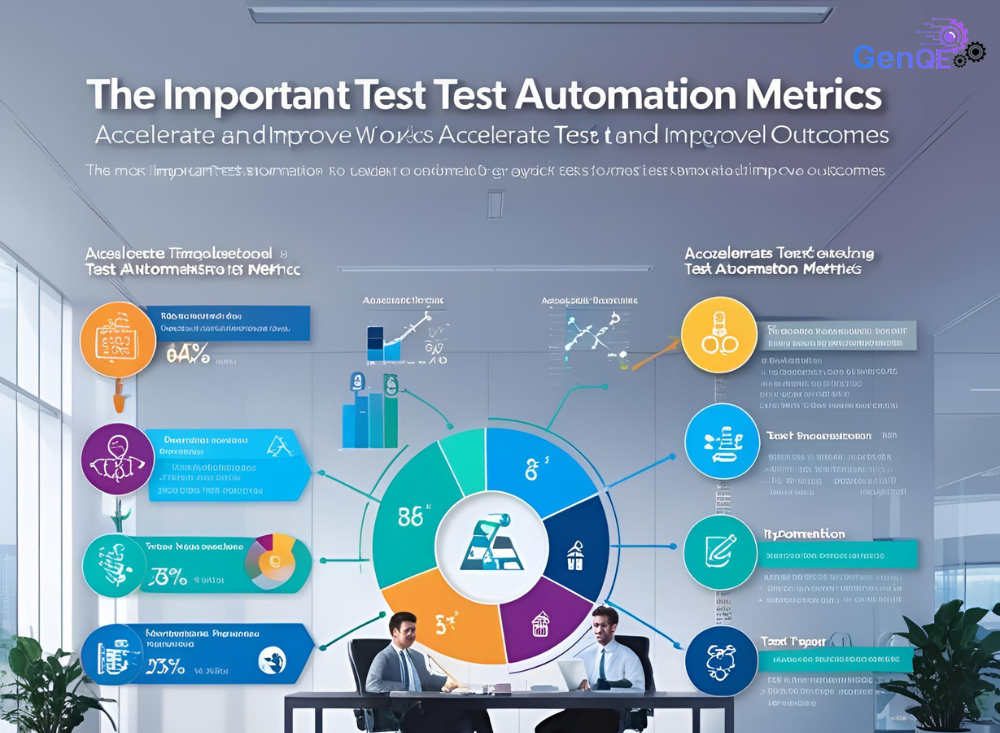
Test automation is a critical component of modern software development, enabling teams to deliver high-quality applications faster. However, to maximize the effectiveness of test automation, it’s essential to measure the right metrics. These metrics provide insights into the efficiency, reliability, and ROI of your automation efforts. Below, we explore the big-picture questions to answer and the must-have test automation metrics to track.
Big-Picture Questions to Answer
Before diving into specific metrics, ask yourself these high-level questions to ensure your test automation strategy aligns with your goals:
- Is automation saving time and effort? Are you reducing manual testing efforts and accelerating release cycles?
- Are tests reliable? Are your automated tests stable, or do they frequently fail due to flakiness or environmental issues?
- Are we catching defects early? Is automation helping identify critical bugs before they reach production?
- Is automation cost-effective? Are the benefits of automation outweighing the costs of implementation and maintenance?
- Are we covering the right scenarios? Are your automated tests addressing the most critical and high-risk areas of the application?
Answering these questions will help you focus on the metrics that truly matter.
Must-Have Test Automation Metrics
Here are the key metrics to track for accelerating and improving your test automation outcomes:
1. Automatable Test Opportunities
- What It Measures: The percentage of test cases that can be automated versus those that require manual testing.
- Why It Matters: Helps identify areas where automation can be expanded to maximize efficiency.
. Formula:
Automatable Test Opportunities = Number of Automatable Test Cases\ Total Number of test cases* 100
Testing Time
- What It Measures: The time taken to execute automated test suites.
- Why It Matters: Reduces feedback loops and accelerates release cycles.
- Goal: Minimize testing time while maintaining coverage and accuracy.
3. Pass Rates
- What It Measures: The percentage of test cases that pass successfully.
- Why It Matters: Indicates the stability and reliability of your application and test scripts.
. Formula:
Pass Rate = Number of Passed Tests\Total Number of Tests Executed*100
Script Failures
- What It Measures: The number of test scripts that fail during execution.
- Why It Matters: Helps identify flaky tests, environmental issues, or gaps in test coverage.
- Goal: Reduce script failures by improving test stability and addressing root causes.
5. Defects Found
- What It Measures: The number of defects identified through automated tests.
- Why It Matters: Demonstrates the effectiveness of automation in catching bugs early.
- Goal: Increase the number of critical defects found during automated testing.
6. Defect Distribution
- What It Measures: The distribution of defects across different modules, features, or severity levels.
- Why It Matters: Helps prioritize areas of the application that need more attention.
- Goal: Focus testing efforts on high-risk areas with the most defects.
How Genqe.ai Can Help
To streamline your test automation efforts and track these metrics effectively, consider using Genqe.ai. This AI-powered tool offers:
- Automated Test Case Generation: Identifies automatable test opportunities and generates test scripts.
- Real-Time Analytics: Tracks key metrics like pass rates, script failures, and defect distribution.
- AI-Driven Insights: Provides actionable recommendations to improve test coverage and stability.
- Integration with CI/CD: Seamlessly integrates with your development pipeline to accelerate testing.
By leveraging Genqe.ai, you can simplify test automation, improve outcomes, and focus on delivering high-quality software faster.
Conclusion
Tracking the right test automation metrics is essential for optimizing your efforts and achieving better outcomes. By focusing on automatable test opportunities, testing time, pass rates, script failures, defects found, and defect distribution, you can ensure your automation strategy is effective and aligned with your goals. Tools like Genqe.ai can further enhance your automation efforts by providing AI-driven insights and actionable recommendations.
Start measuring these metrics today to accelerate your test automation journey and deliver better software, faster.